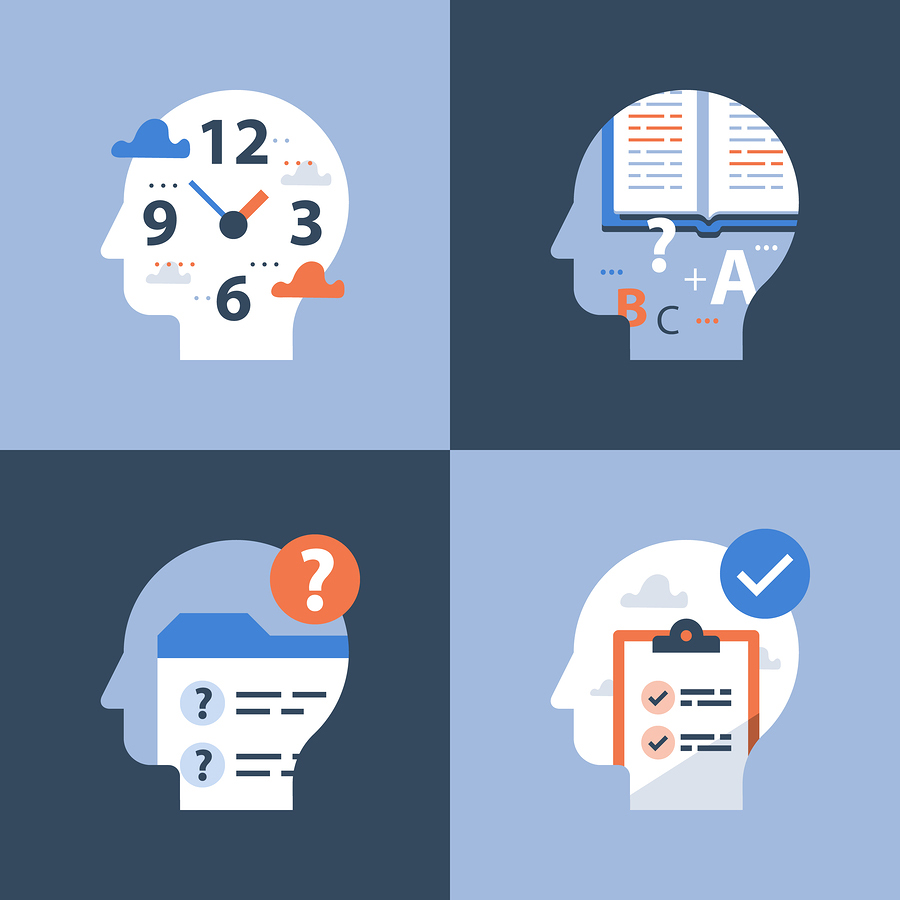
The human brain works something like a complex computer. It needs to process information at super-fast speeds in order to understand information and to allow you to think, act and move. If you have ever struggled with an old computer, you will understand the frustration of working with software which is much less speedy than you are used to, with the temptation being to press more buttons or try to reload pages, and thus making the whole situation worse.
This is a great metaphor for how it can feel to work with children with communication needs. Although they have the power to understand and process the information, they need more time in order to do so, so asking more questions is like pressing more buttons - you are simply going to make the whole problem worse.
The Communication Chain
All human beings process communication in the same way, this process is known as the ‘communication chain’. If there is a breakdown at any stage of the communication chain, this will affect the person’s ability to hear and understand what is being said. The ‘links’ in the chain are various and have different names in different theories, but basically break down into:
- Attention
- Hearing
- Remembering
- Understanding
- Expression - talking
- Monitoring feedback
There are also two sides to the chain, the receptive side, and the expressive side.
Receptive
On the receptive side of the chain you will find the attention, hearing, remembering and understanding links. This basically means that the child first needs to look and see that they are required to listen, hear what is being said, remember the information and then process it from both spoken and non-verbal. More than 70% of what we understand is non-verbal, so this is just as critical as being able to understand spoken words. Non-verbal communication helps people to understand context, as well as more abstract ideas such as sarcasm.
Expressive
On the expressive side of the chain are expression and monitoring feedback. It is through talking that the listener can communicate how they feel about what they have heard. On the expressive side of the chain, it is necessary to have ideas and communicate these thoughts using the right words in sentences with appropriate body language. Self-monitoring is also crucial, for example, if the child is speaking and can see that the person they are speaking to does not understand, they need to be able to recognise this and adapt what they are saying to make it more understandable.
How can Elklan training help?
One of Elklan’s most widely used and popular strategies is waiting up to 10 seconds for a child or young person to respond to a question or conversation. This strategy may also be used with adults with special needs, or issues such as dementia. Although 10 seconds can seem like a long time, it gives the person valuable time to process what has been said and formulate their response, without the pressure associated with being interrupted or asked another question before they are ready.
After waiting 10 seconds, Elklan training teaches you to question yourself in order to understand what the problem might have been. Perhaps you asked too many things at once, or the language was too complex for the person you are speaking with. Perhaps the child simply wasn’t paying attention and you need to get their full attention before asking again. Once you have waited for 10 seconds you can rephrase the question so that the child can better understand it. If you feel that the child’s language skills are such that s/he should have been able to answer your question then you can simply ask it again using the same words.
Tips for modifying your language
If you have asked a question and don’t feel that it has been understood, here are some ways that you can modify your language to make it easier for the child to understand.
- Speak more slowly
- Speak in shorter sentences
- Repeat key words and place stress on the most important words in the sentence
- Don’t pile additional questions on to the child, saying less is sometimes more!
- Use visual aids to emphasise what you are saying
- Be mindful of the environment. For some children with communication needs, a noisy environment can make it hard for them to concentrate.
Monitoring feedback
Not only is monitoring feedback a key part of the communication chain, it is also an important thing for you to do as a teacher. This requires you to monitor the other person’s reaction to what you have said, to work out whether they have understood you, and to understand how they feel about it.
There may be clear signs that a child has not understood what you have said, which make it easier for you to act. These could include:
- Not making eye contact/dropping eye contact
- Becoming agitated
- Becoming visibly uncomfortable or nervous
- Walking away
- Responding in an unexpected way
However, sometimes a person may not understand what is being said but give the correct response so that it is not obvious that they didn’t. A child could easily nod when asked a question because they recognise that a question has been asked, and ‘yes’ could be the right response, but this doesn’t mean that they have understood. You could test whether a child has understood what you are asking by, for example:
- Asking open-ended questions, rather than ones which just require a yes or no answer
- Asking them to pick out certain points in what you have just talked about (perhaps their favourite point, or the most interesting).
How to help a child understand
If you feel that a child has not understood what you have said, there are a few simple ways that you can make changes to your question so that they do.
- Use a familiar gesture or sign. You can work with children to put together basic signs that will help them in these situations.
- Rephrase the question. Make it simpler or break it down into smaller parts.
- Repeat keywords
- Change keywords
Talk to us
Elklan provides parents, teachers and teaching assistants strategies to develop and promote communication in children and young people, helping to ease frustration for adult and child alike, and making for a more inclusive teaching environment. Waiting to allow children to process the language is just one of these strategies, so investigate booking Elklan training as soon as possible to make your setting or school a communication-friendly environment!
To see how Elklan can help you, please give us a call on 01208 841450 or contact us.






